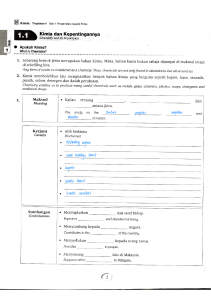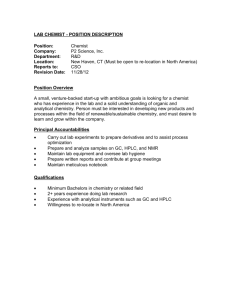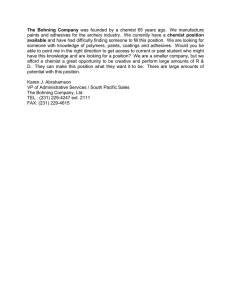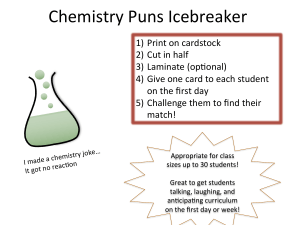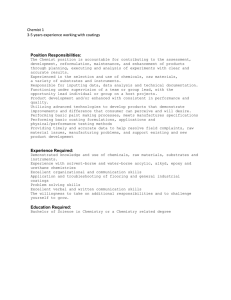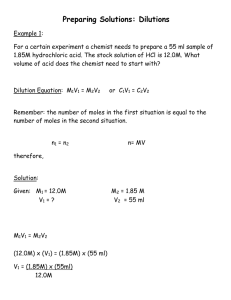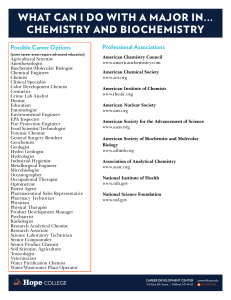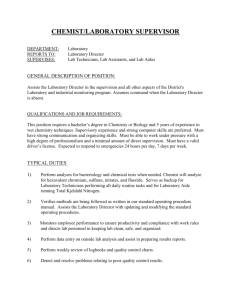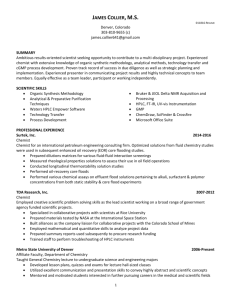methyl chemists
advertisement
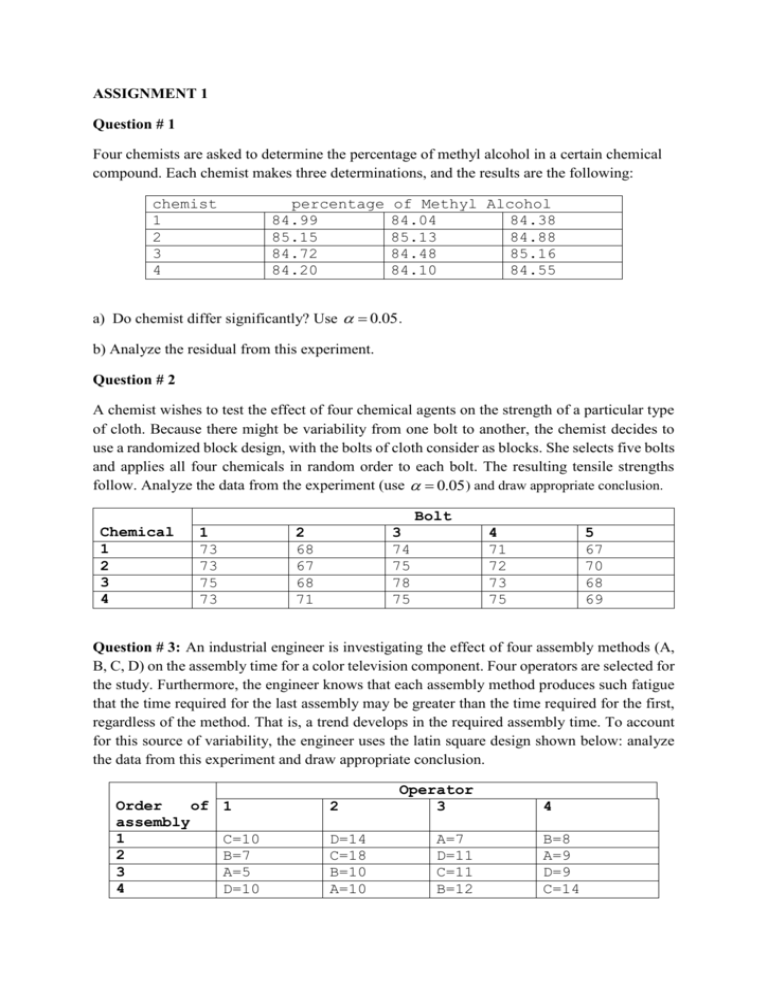
ASSIGNMENT 1 Question # 1 Four chemists are asked to determine the percentage of methyl alcohol in a certain chemical compound. Each chemist makes three determinations, and the results are the following: chemist 1 2 3 4 percentage 84.99 85.15 84.72 84.20 of Methyl Alcohol 84.04 84.38 85.13 84.88 84.48 85.16 84.10 84.55 a) Do chemist differ significantly? Use 0.05 . b) Analyze the residual from this experiment. Question # 2 A chemist wishes to test the effect of four chemical agents on the strength of a particular type of cloth. Because there might be variability from one bolt to another, the chemist decides to use a randomized block design, with the bolts of cloth consider as blocks. She selects five bolts and applies all four chemicals in random order to each bolt. The resulting tensile strengths follow. Analyze the data from the experiment (use 0.05 ) and draw appropriate conclusion. Bolt Chemical 1 2 3 4 1 73 73 75 73 2 68 67 68 71 3 74 75 78 75 4 71 72 73 75 5 67 70 68 69 Question # 3: An industrial engineer is investigating the effect of four assembly methods (A, B, C, D) on the assembly time for a color television component. Four operators are selected for the study. Furthermore, the engineer knows that each assembly method produces such fatigue that the time required for the last assembly may be greater than the time required for the first, regardless of the method. That is, a trend develops in the required assembly time. To account for this source of variability, the engineer uses the latin square design shown below: analyze the data from this experiment and draw appropriate conclusion. Order of assembly 1 2 3 4 1 2 C=10 B=7 A=5 D=10 D=14 C=18 B=10 A=10 Operator 3 A=7 D=11 C=11 B=12 4 B=8 A=9 D=9 C=14 Question # 4 The yield of the chemical of a chemical process was measured using five batches of raw material, five acid concentration, five standing times (A,B,C,D,E) and five catalyst concentration ( , , , , ) . The Gracco Latin square that follows was used. Analyze the data from this experiment and draw conclusion. Batch 1 2 3 4 5 1 A 26 B 26 C 20 D 15 E 10 Acid Concentration 2 3 4 B 16 C 19 D 16 C 21 D 18 E 11 E 16 A 25 D 12 E 15 A 22 B 14 C 17 A 24 B 17 Question # 5 For GLSD do the following: 1. Derive least square estimates 2. Show partitions of total sum of square 3. Derive expected values for all the partitioned components. 5 E 13 A 21 B 13 C 17 D 14
